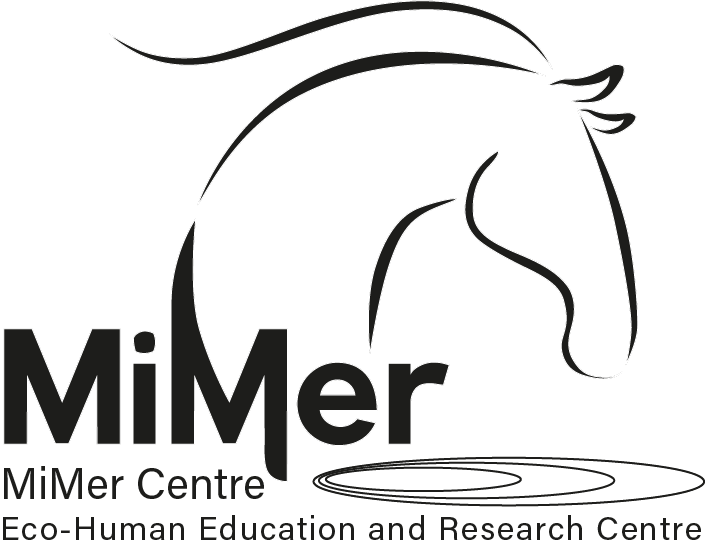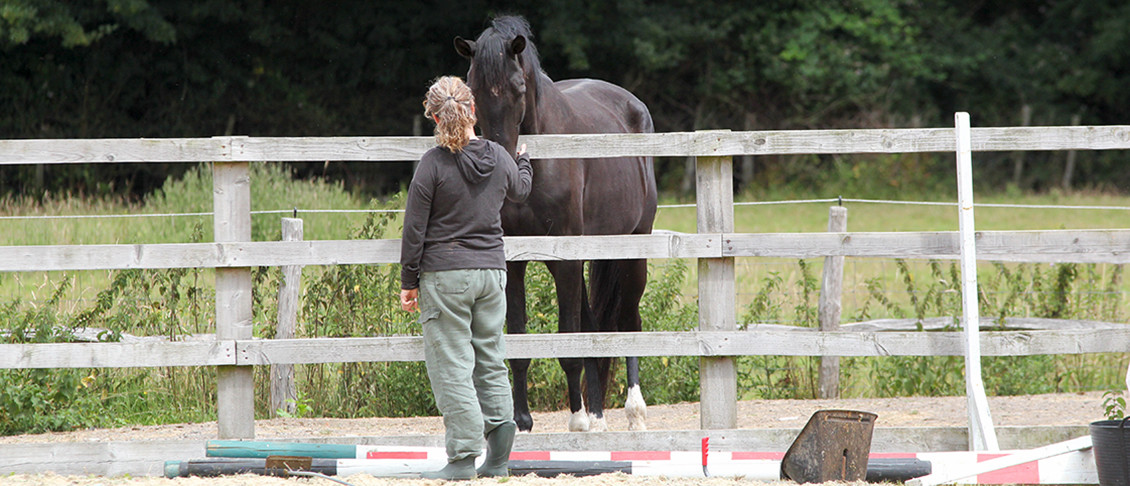The other (species) – as a reference point in therapeutic work and personal growth
The beginning of an exploration…
Why do we work with animals in therapy and learning programs? Having been involved in equine assisted therapy and learning for some years, as an equine professional, educator and mindfulness instructor – and as a client, this is what I think of it (right now…)
To grow, to develop, to heal – we need "the other", that sees us, accepts us, accompanies, challenges and supports us – and at times comforts us, to help us see ourselves from their perspective.
Animals in Animal Assisted Activities of any kind are not different in these settings to what they are in other settings – or should not have to be – in my opinion. There is no need to train them to behave in certain ways according to what we think is needed of them in these activities. On the contrary – the more "them" they are and can be, the more they can display species specific and individual natural (in contrast to learned) behaviors, the better "it works", the therapy, or the learning.
Why? For a couple of reasons. Firstly, many people struggle with being authentic. Sometimes because they don't think who they are is good enough, they are afraid of judgment or they do not actually know who they are. What they then need to meet is both humans and animals who are themselves, humans who dare to be authentic and animals who are not so intensively conditioned they can not behave naturally anymore, but only look for how to please the human(s).
By being themselves, not there to please someone, relationship between the therapist/coach or other professional team member (e.g. an equine professional) and the animal show that being who you are is okay. The animal is neither punished nor rewarded for being in any specific way, not punished for "being bad" and not rewarded for "being good". But is in a relational context accepted for whom he is, but where he still need to follow some "common sense rules", that can show both the animal and the client how to take care of safety (if you are a dog – it Is not okay to run into a street with traffic e.g.), agreeing on what is nice for one another (again, if you are a dog – it is okay for a human to say, no, I do not like when you jump at me). There is a huge possibility to role model a reciprocal and listening relationships between beings, for the client to see, where acceptance, respect, mutual listening, etc. is at its core.
This is one aspect of how the animal in the work with animals in therapy and learning functions as a point of reference. It is easier to see how boundaries are negotiated between an animal and a therapist/coach/other professional team member than between two humans. The human providers need to be clearer in her/his/their language for the animal to understand, there needs to be a clear body language involved, and a congruency in what is asked for and answered to with symbols/language/voice and the rest of the body. The animal here becomes a point of reference for "the other" in functional relationships. As a client you are invited to see, hear and take part in this relational dynamic, and this opportunity gives a lot of material to reflect on and discuss, but does also teach in a more unconscious way, to a great extent, this is about role modelling.
Besides being "the other" an animal can also be you, as a client. You can identify with the animal. And how you see the animal is met and treated by anyone in a treatment/learning team is how you imagine – or unconsciously react to yourself being met in relationships. Again, this is easier to spot, as a client – even if you identify with an animal or the animal as "the other" in a relationship – it will be, at the same time, if not always obvious, at least easier to see that the animal – is an animal, not a human being, so therefor he cannot be you (or "the other"), then you learn about projections and YOUR role in projecting – what you typically project. Unless you view yourself as an animal (non-human) – which is not uncommon for severely traumatized individuals to do. Then it will take longer for you to distinguish yourself out from the identification with the animal and being able to use him as a point of reference, but it will come – and it will be easier in some situations than in others.
You can also identify the animal as being someone (or several) important people (or other beings) in your life (with negative or positive connotations). Again – this identification will be easier to see – since the difference between an animal and a human is there. You can, as a client, be reminded, triggered by an animal and the similarities you think you see in him and someone you know from your past or present life – but it will also be easier for you to see that this -whatever similarities the animal is carrying – is a projection. That you, as everyone, have the tendency to project experiences with important people from our lives – onto other living beings.
Finally, there is the "we". To have someone to form a we with. To try it out on your own – to have relationships where how you present yourself is given a first and straight feedback – with no intention to harm, belittle you, judge you, rate your performance – anything. The "language" from the animal is so much clearer, un-muddled (if mostly natural and un-conditioned) – so you can hear it. Again – the difference between an animal and a human plays an important role here. To make it simpler, clearer, more transparent, more trustworthy.
For me – this is the theory of intersubjectivity at play. For it to work in Animal Assisted Therapy and Learning – every animal needs to be allowed to be them. That also entails the therapist/coach/other EAP/L professional NOT projecting their own stuff onto the animals either, not wish for or try to get the animal to be in any particular way.
I have said it before – and I stand by it – animals do not heal anyone, do not teach anyone anything. They don't care if you are (or feel) healed, educated, whole, yourself – they only meet you where you are – again and again, no judgments. So when therapists and coaches – or other people in our field put their projections onto the animals – they take away from the role the animals have in animal assisted therapy and learning. The animals are there as themselves – what the client sees – is another story, what the therapist/coach - any kind of provider sees – is not to be part of your client's story. If you need your story to be seen and told – I recommend animal assisted therapy to you.
Copyright protected © Katarina Lundgren 2019
(photos in my writings are always from trainings and published with consent)
When you subscribe to the blog, we will send you an e-mail when there are new updates on the site so you wouldn't miss them.


Comments